Getting new clients up and running smoothly is a big deal for accounting firms. A solid onboarding process not only makes life easier for you but also sets the stage for a great client relationship. This guide will walk you through creating an effective accounting new client checklist for 2025, helping you stay organized and impress your clients from the very start.
Key Takeaways
- A well-structured onboarding process builds trust and improves efficiency.
- Using technology like client portals and automation tools can save time.
- Tailoring the onboarding experience to each client fosters stronger relationships.
Mastering the Art of Client Onboarding

Why First Impressions Matter in Accounting
Alright, let’s talk first impressions. You know that saying about never getting a second chance to make one? Well, it’s extra true in accounting. The moment a new client signs up, they’re sizing you up. Are you organized? Do you actually care about their business? Or are you just another number-cruncher? A solid onboarding process is your chance to say, “Hey, we’ve got this!” It’s not just about impressing them—it’s about building trust from day one.
Streamlining the Onboarding Workflow
Here’s the deal: onboarding doesn’t have to be a chaotic mess of emails, phone calls, and misplaced documents. Simplify it. Create a checklist, automate repetitive tasks, and set up a workflow that your whole team can follow. Think of it like assembling IKEA furniture but without the missing screws—everything has its place, and it just works. Bonus? You’ll save time and reduce headaches for both you and your client.
Here’s a quick example of what your streamlined workflow might look like:
| Step | Task |
|---|---|
| Step 1: Welcome | Send a personalized welcome email |
| Step 2: Documents | Request and collect all necessary files |
| Step 3: Setup | Input client details into your systems |
| Step 4: Kickoff Call | Review expectations and next steps |
Avoiding Common Pitfalls in Client Setup
Let’s be real—things can go sideways during onboarding. Maybe you forget to ask for a critical document, or you assume the client knows how to use your fancy software. Avoid these rookie mistakes:
- Overloading the client: Don’t drown them in paperwork or emails. Spread out the tasks.
- Skipping the tech check: Make sure they’re comfortable with your tools. A quick tutorial can save hours of future confusion.
- Assuming too much: Not every client knows accounting lingo. Keep it simple and relatable.
Pro Tip: Treat every onboarding like it’s your first. Double-check your checklist, and don’t cut corners. Your future self (and your client) will thank you.
Building a Foolproof Accounting New Client Checklist
Essential Documents to Gather
Alright, let’s kick things off with the paperwork. Gathering the right documents from the get-go can save you (and your client) from future headaches. Here’s a quick rundown of what you should ask for:
- Business Registration Details: Think tax IDs, incorporation certificates, or anything that proves their business exists legally.
- Financial Statements: Prior year’s reports, tax returns, and payroll records. It’s like having a map before you start the journey.
- Access Credentials: If they’re using accounting software, make sure you get login details. Compatibility checks with your tools are also a must.
Having these at your fingertips ensures you’re not scrambling later.
Key Questions to Ask Your Clients
Now that you’ve got the paperwork, let’s chat. Asking the right questions upfront can help you understand their needs and avoid surprises. Here’s what you should cover:
- What’s your business structure? Sole proprietor, LLC, or something else? This impacts how you handle their books.
- What are your financial goals? Knowing this helps you tailor your services.
- Any specific deadlines or pain points? Maybe they’re drowning in overdue invoices or have a tax filing deadline looming.
Don’t skip this step—it’s your chance to set the stage for a smooth working relationship.
Setting Clear Expectations from Day One
Let’s talk boundaries and clarity. Setting expectations early is like defining the rules of a board game before you start playing. Here’s how to do it:
- Define the Scope of Work: Be crystal clear about what’s included—and what’s not.
- Agree on Communication Channels: Email? Phone? Carrier pigeon? Pick one and stick to it.
- Set Deadlines and Deliverables: Nobody likes surprises, especially when it comes to timelines.
A solid onboarding checklist isn’t just a tool—it’s your secret weapon for building trust and avoiding chaos. Use it wisely, and you’ll set the tone for a long-lasting client relationship.
By nailing these three steps, you’re not just onboarding clients—you’re onboarding them right. And trust me, that makes all the difference.
Tech-Savvy Tools for a Seamless Onboarding Experience

Choosing the Right Accounting Software
Alright, let’s talk software. Picking the perfect accounting platform is kind of like choosing a roommate—you want one that’s reliable, flexible, and doesn’t crash on you. Cloud-based systems like QuickBooks or Xero are great because they sync with your bank accounts and keep everything neat and tidy. Plus, they’re accessible anywhere, so if you’re working from a coffee shop or your couch, you’re covered. Just make sure to pick one that fits your firm’s size and needs.
Pro Tip: Look for software that integrates with your client onboarding tools to save yourself from drowning in manual data entry.
Automating Repetitive Tasks
Let’s face it—manual tasks are the worst. Automating things like sending reminders, tracking documents, and even scheduling follow-ups can save you hours. Tools like customer onboarding software can handle the boring stuff, so you can focus on what really matters: your clients. Automating doesn’t just save time; it also reduces errors. You’ll never miss a deadline or forget a step again. Seriously, who doesn’t want that?
Here’s what you can automate:
- Sending welcome emails to new clients.
- Sharing document checklists and tracking completion.
- Scheduling follow-up meetings or calls.
Leveraging Client Portals for Efficiency
Client portals are the unsung heroes of the accounting world. They let clients upload documents securely, check project status, and even sign contracts electronically. It’s like having a 24/7 assistant that never takes a coffee break. Plus, it keeps everything in one place—no more digging through emails to find that one attachment from three months ago.
Why You’ll Love It:
- Secure file sharing keeps sensitive data safe.
- Real-time updates mean no more “Did you get my email?” calls.
- Built-in e-signature tools speed up the approval process.
The right tech doesn’t just make your job easier—it makes your clients’ lives easier too. And happy clients stick around.
Creating a Personalized Onboarding Journey
Tailoring Services to Client Needs
Let’s face it—no two clients are identical. Some might need their hand held through every step, while others just want the numbers and no fluff. The trick? Listen more than you talk. Ask questions like, “What’s your biggest accounting headache?” or “How do you prefer to communicate—email, carrier pigeon, or smoke signals?” Tailoring your services starts with understanding their pain points and preferences. If they mention being overwhelmed by bookkeeping, consider introducing them to a structured bookkeeping client onboarding checklist to make life easier.
Communicating Effectively Throughout the Process
You know what’s worse than bad accounting? Bad communication. Keep it simple and consistent. Whether it’s a quick email update or a scheduled check-in, make sure your client knows what’s happening and when. Pro tip: Avoid jargon like “fiscal reconciliation” unless you want blank stares. Instead, use plain, relatable terms. And hey, don’t ghost them after onboarding—keep the lines open for questions or feedback.
Ensuring a Smooth Transition to Your Services
Switching accountants can feel like moving houses—stressful and full of surprises. Make it painless by outlining exactly what they need to do and when. A quick checklist can work wonders:
- Provide previous financial records.
- Share access to accounting software.
- Confirm key deadlines.
Also, don’t forget to celebrate small wins, like completing their first report under your guidance. It’s the little things that build trust and loyalty.
Wrapping It All Up
So, there you have it—your ultimate cheat sheet for onboarding new accounting clients like a pro. Sure, it might feel like a lot to tackle at first, but trust me, once you’ve got your system down, it’s smooth sailing. Plus, a solid onboarding process doesn’t just make your life easier—it sets the tone for a great working relationship with your clients. And hey, who doesn’t want happy clients who stick around? So grab that checklist, pour yourself a coffee (or tea, no judgment), and get to it. Your future self—and your clients—will thank you.
Frequently Asked Questions
What is a new client onboarding checklist for accounting?
A new client onboarding checklist is a step-by-step guide to help accounting firms gather important documents, set up processes, and establish clear communication with new clients. It ensures nothing is missed and helps create a smooth start for both the accountant and the client.
Why is client onboarding important in accounting?
Client onboarding is crucial because it sets the tone for the relationship. A well-organized process builds trust, reduces errors, and ensures both the accountant and client are aligned on expectations and goals.
What tools can make client onboarding easier?
Tools like accounting software, automated task managers, and client portals can simplify the onboarding process. These tools help with document collection, communication, and tracking progress efficiently.







